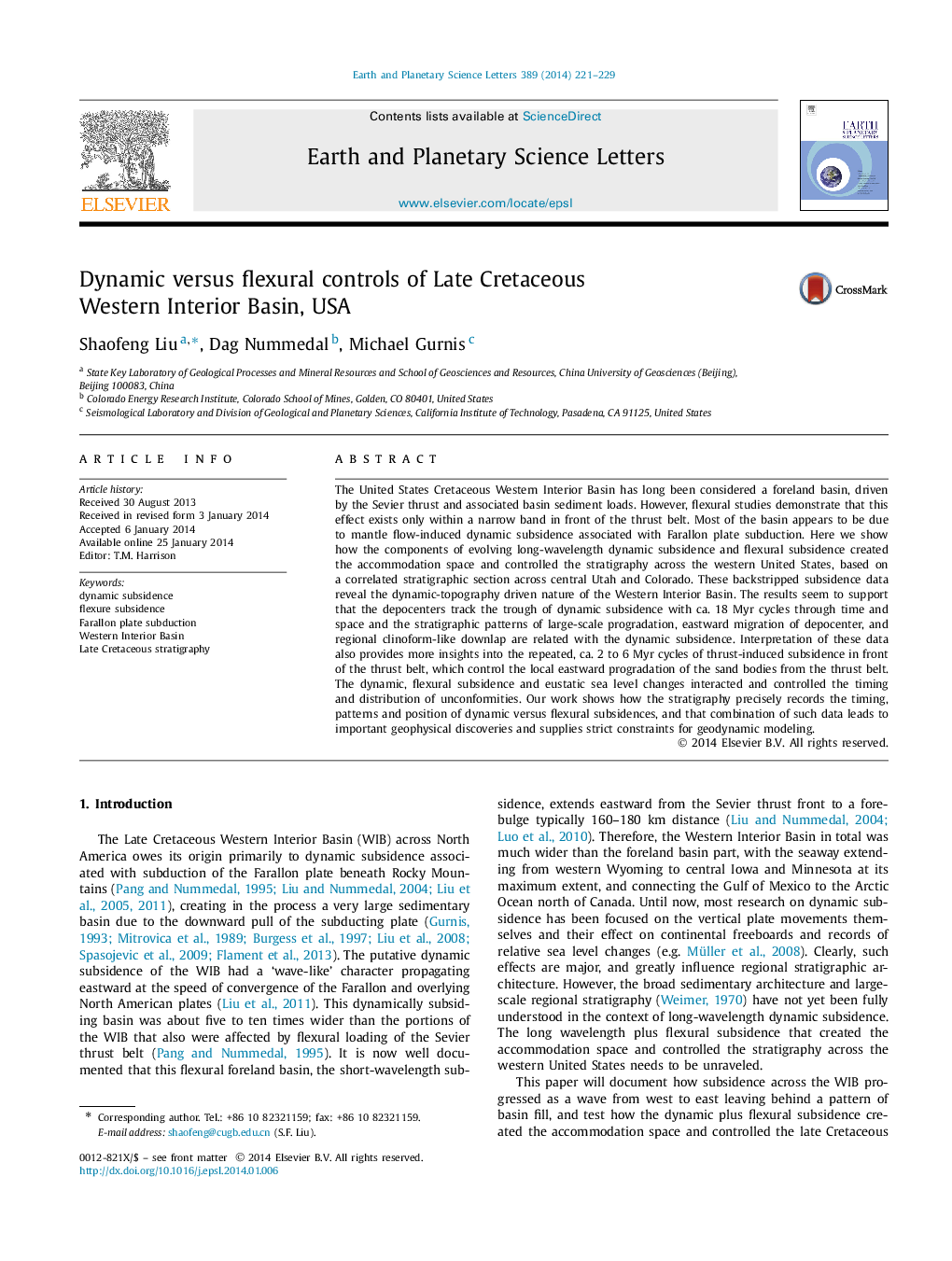| Article ID | Journal | Published Year | Pages | File Type |
|---|---|---|---|---|
| 6429703 | Earth and Planetary Science Letters | 2014 | 9 Pages |
â¢Basin depocenters track troughs of dynamic subsidence with â¼18 Myr cycles.â¢Cycles of thrust-induced subsidence in front of the thrust belt last â¼2 to 6 Myr.â¢Dynamic, flexure and sea level change interact and control the unconformities.â¢Western Interior Basin was driven by dynamic versus flexural subsidence.
The United States Cretaceous Western Interior Basin has long been considered a foreland basin, driven by the Sevier thrust and associated basin sediment loads. However, flexural studies demonstrate that this effect exists only within a narrow band in front of the thrust belt. Most of the basin appears to be due to mantle flow-induced dynamic subsidence associated with Farallon plate subduction. Here we show how the components of evolving long-wavelength dynamic subsidence and flexural subsidence created the accommodation space and controlled the stratigraphy across the western United States, based on a correlated stratigraphic section across central Utah and Colorado. These backstripped subsidence data reveal the dynamic-topography driven nature of the Western Interior Basin. The results seem to support that the depocenters track the trough of dynamic subsidence with ca. 18 Myr cycles through time and space and the stratigraphic patterns of large-scale progradation, eastward migration of depocenter, and regional clinoform-like downlap are related with the dynamic subsidence. Interpretation of these data also provides more insights into the repeated, ca. 2 to 6 Myr cycles of thrust-induced subsidence in front of the thrust belt, which control the local eastward progradation of the sand bodies from the thrust belt. The dynamic, flexural subsidence and eustatic sea level changes interacted and controlled the timing and distribution of unconformities. Our work shows how the stratigraphy precisely records the timing, patterns and position of dynamic versus flexural subsidences, and that combination of such data leads to important geophysical discoveries and supplies strict constraints for geodynamic modeling.
Graphical abstractDownload high-res image (71KB)Download full-size image
